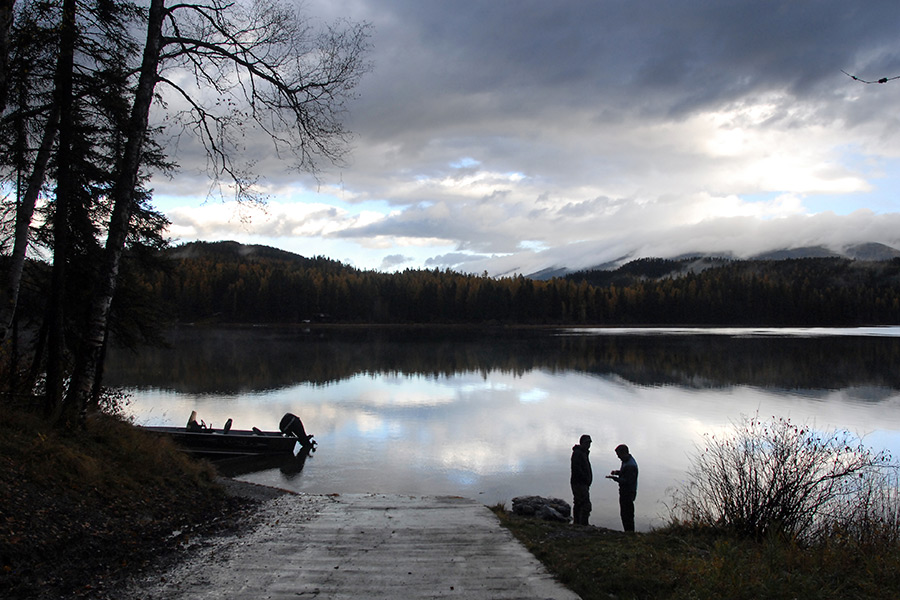The Montana Mussel Response Team has released its $10.2 million strategy to combat the threat of invasive zebra and quagga mussels and is urging the Montana Legislature to help fund the two-year plan.
The plan, called the Invasive Mussel Framework Implementation Strategy Recommendations, marks a shift from the team’s initial emergency response to the detection of mussel larvae in the state to an implementation strategy to detect, contain and control the invaders if they take hold.
Developed by the Montana Fish, Wildlife and Parks Department and the Department of Natural Resources and Conservation, the plan recommends doubling the number of inspection stations on roads leading into the state from 17 to 34 in an effort to intercept infected watercraft before boats are launched, while adding four new decontamination stations.
The report also calls for increasing sampling of water bodies; ensuring adequate funding for staffing, research and public information; coordinating with other state programs to detect and control invasive species; and lays out a rapid-response plan if a threat materializes.
Under the plan, the state may enforce restrictions and closures of water bodies if a threat surfaces.
The estimated biennium cost for staffing, equipment and other expenses between July 1, 2017 and June 30, 2019, is $10.2 million.
According to Charlie Sperry, deputy incident commander for the Montana Mussel Response Team, the task force has now entered the implementation phase of the plan, and the emergency declaration set forth by Gov. Steve Bullock in November has ended.
The Montana Mussel Incident Response Team was formed in December in response to the recent discovery of mussel larvae in Tiber and Canyon Ferry reservoirs east of the Continental Divide, as well as in the Milk River near Malta and the Missouri River near York’s Islands Fishing Access Site south of Townsend.
So far, the traces of contamination are restricted to the Missouri River Basin, but the potential for mussels to spread by clinging to the hulls of boats or persisting in the bilge water has risen dramatically.
The threat of mussel infestation hits especially close to home for those working to protect the waters of Flathead Lake and its surrounding network of rivers and creeks, and it comes to rest at the doorstep of the Columbia River Basin — the only major watershed in the West still believed to be free of quagga and zebra mussels.
Sperry said the Mussel Response Team presented its recommendations to the Montana Legislature’s Joint Appropriations Subcommittee on Natural Resources and Transportation in an effort to secure funding.
Leaders of the Confederated Salish and Kootenai Tribes also declared a formal emergency Dec. 20 to counter the potential spread of invasive mussel larvae into reservation waters and Flathead Lake, considered one of the cleanest lakes in the world.
Additional efforts are underway to study whether Flathead Lake has been infested with mussels, with biologists from CSKT and the Flathead Lake Biological Station leading the charge.
Researchers at the biological station on Flathead Lake wrote a joint letter to the state encouraging lawmakers to incorporate eDNA monitoring and detection techniques for invasive mussels into their statewide plan as a complementary technique to traditional sampling and microscopy.
The eDNA, or Environmental DNA, methods offer a faster timeframe to detect mussels, have the ability to detect mussels at any life stage and even traces of mussel feces, can single out the specific species of mussel present, and increases the chance of early detection.
“It is important to point out that early detection is key to the possibility of success of containment and eradication,” Shawn Devlin, a research professor of aquatic ecology at FLBS, said.
To help inform the public about the serious threat mussels pose to Montana’s lakes, rivers and water supplies, as well as its aesthetic beauty and recreation economy, the tribes partnered with the Flathead Lake Biological Station to host a series of upcoming invasive mussel presentations.
The presentations will be held on Feb. 6 at the KwaTaqNuk Resort in Polson at 6 p.m.; on Feb. 9 at Flathead Valley Community College at 6 p.m. in the Arts and Technology Building, Room 139; and on Feb. 15 at Salish Kootenai College at 6 p.m. at the Johnny Arlee and Victor Charlo Theater.
